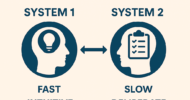Daylight saving time is approaching again. At first glance, it might seem enough to just remember to spring forward. But do you realize daylight saving time is one of the grandest social engineering experiments in America?
Almost the entire country moves their schedule up one hour. Every meeting, romantic dinner, and heart transplant occurs one hour later. Every business, court appointment and movie showing is one hour later. In virtual lockstep, the entire nation boldly takes a step into the future.
To put it in perspective, all the millions of dollars, countless man hours, programs, and smart people’s best efforts spent convincing the public to stop smoking, has only reduced the smoking rate by 15 percent. And smoking gives you cancer — it should be an easy sell, right?
But almost by decree, we get nearly 100 percent of the people to move their entire lives an hour forward!
Modern society requires us to be a slave to the clock, a cog in the great machine. Organize almost any human activity and there is implicit agreement to the rule of time. But we are more than machines; we are complex biological organisms that sometimes rebel to even well-meaning change.
Daylight saving time was conceived 100 years ago as a way to save lamp oil during World War 1. Moving the clock forward extended daylight later in the evening, and less whale oil was used in lighting the parlor, which was a noble goal.
When we moved away from lamps that burn oil to ones that require electricity, the equation changed a bit. Now light could be made quite inexpensively, but heating and cooling was less efficient, so daylight saving costs us money.
Trade is modestly increased by daylight saving time. People are more willing to go out and spend money when it is light. A dinner out, a movie, some light shopping, they are all more attractive when you can see where you’re going and don’t need multiple clothing layers.
As you might guess, there is also a biologic cost. There is a measurable spike in heart attacks in the weeks following daylight saving time.
Many people are wandering around critically sleep deprived, and taking away one more hour spills the apple cart (a scary thought as sleeping is not one of my talents). When the clocks fall back in the autumn, heart attacks temporarily go down, and balance is preserved in some weird way.
But most people have only mild challenges from the leap forward. If you are sensitive, it can take several weeks for your sleep cycle to straighten out. Like all human attributes, adaptability to sleep disturbance is quite varied. Some people are challenged and some don’t notice.
But daylight saving is not really about saving money, saving whale oil or increasing trade. Daylight saving is about quality time.
Arriving home from work every night in the dark tends to discourage family activity. That extra hour of sunshine can be the excuse for eating on the patio or going for a walk after dinner — anything to dislodge the family from the TV set is a good thing!
Daylight saving is perhaps wasted on adults. Kids live for it. We all have fond memories of neighborhood gatherings on bright evenings. The chance to burn off a little energy and practice your negotiating and social skills.
Daylight savings is a rite of spring, and a promise of more time to add something fun to our lives. A few fragile people may become unbalanced, but most of us find an extra hour to enjoy life.
Kick the can, anyone?
Donald Bucklin is a regional medical director, US HealthWorks.





















![Addressing America’s reliance on psychotropic medication [PODCAST]](https://kevinmd.com/wp-content/uploads/Design-2-190x100.jpg)
